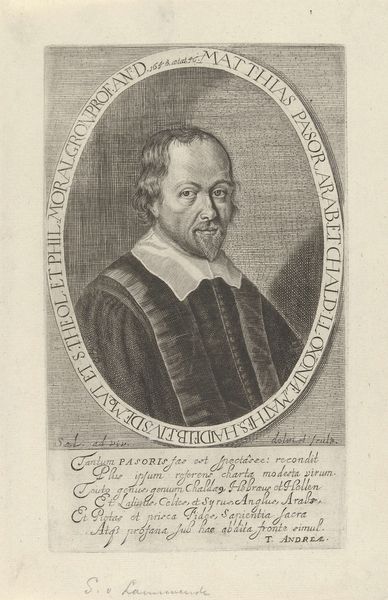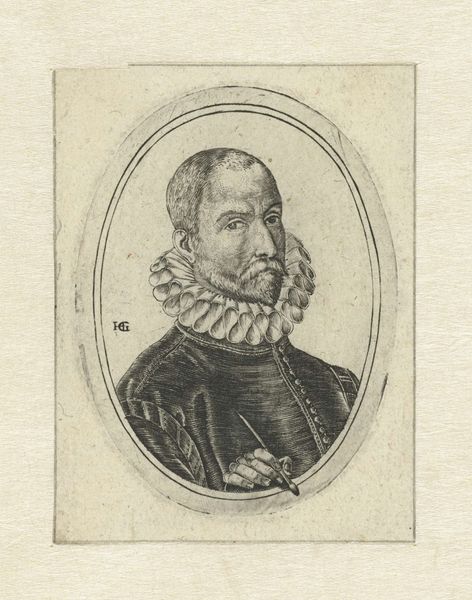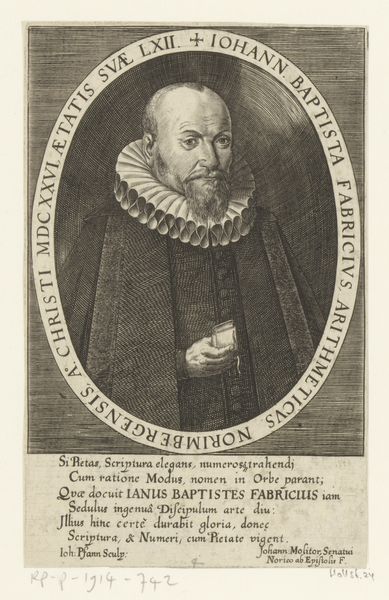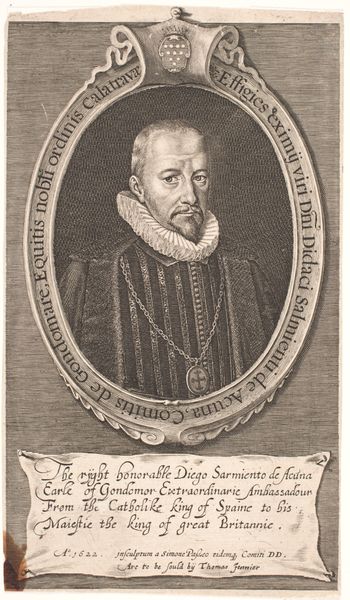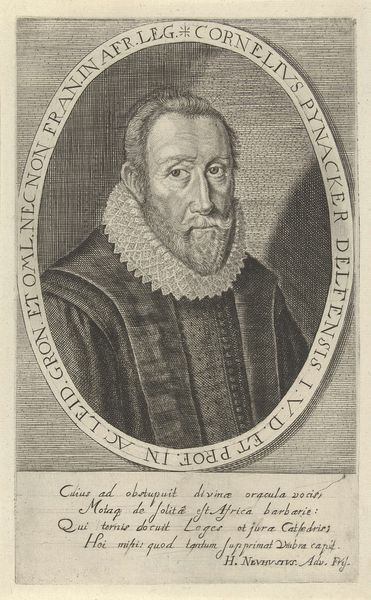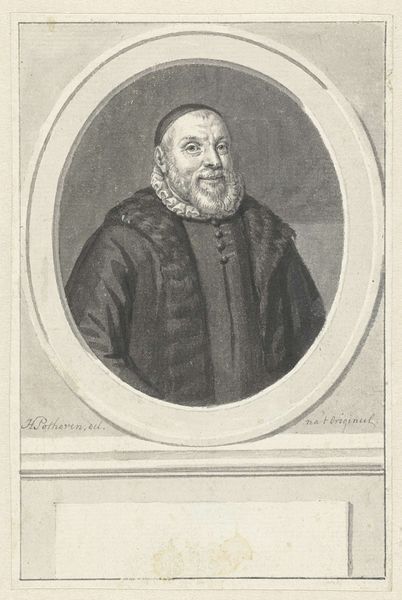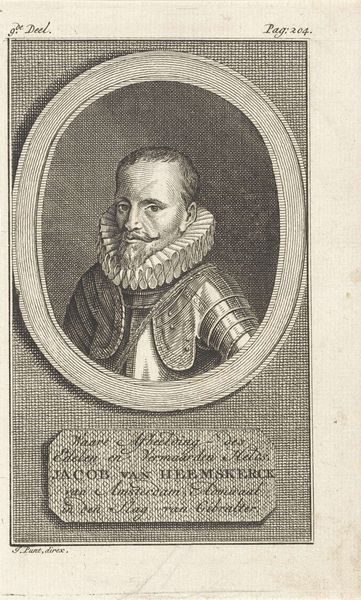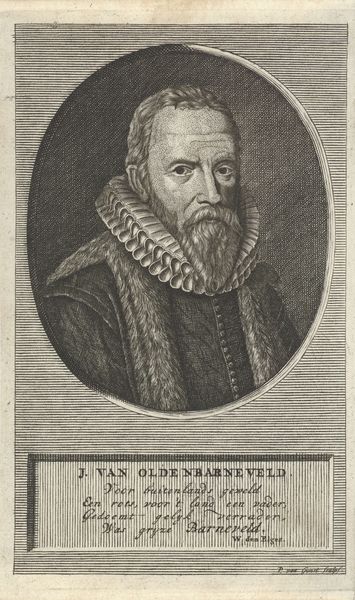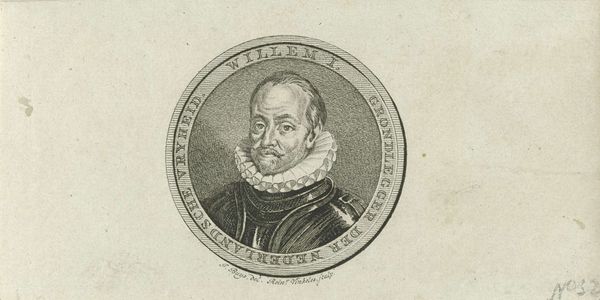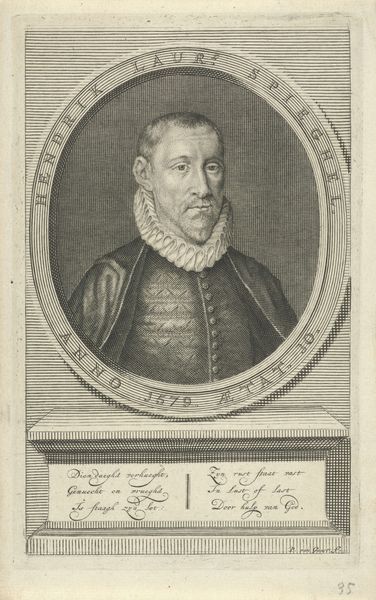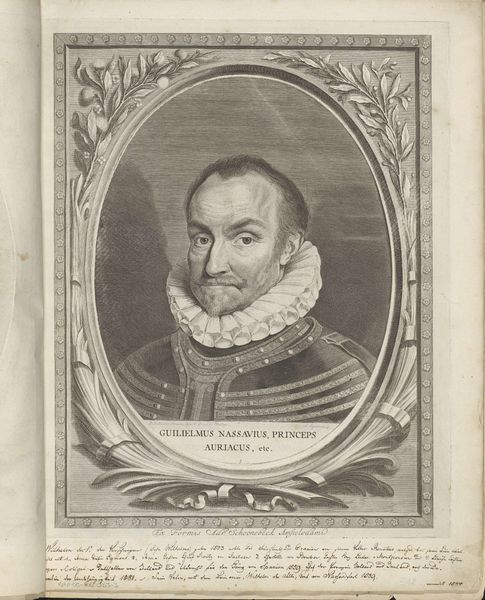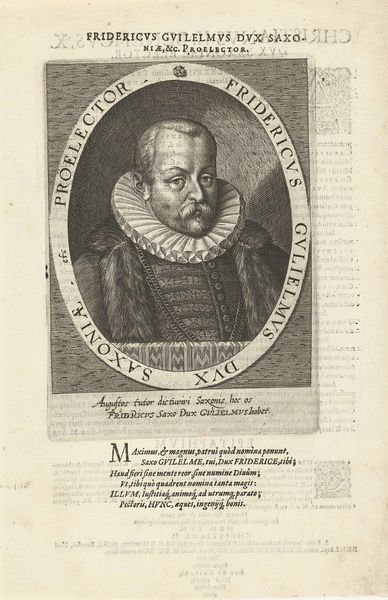
engraving
#
portrait
#
baroque
#
dutch-golden-age
#
old engraving style
#
figuration
#
engraving
Dimensions: height 138 mm, width 85 mm
Copyright: Rijks Museum: Open Domain
Curator: Let’s look at this engraving, "Portret van Johan van Oldenbarnevelt" made sometime between 1659 and 1731 by Pieter van Gunst and housed at the Rijksmuseum. It’s a very typical example of Baroque portraiture from the Dutch Golden Age. What stands out to you? Editor: I’m struck by how formal and perhaps a bit stern the portrait feels. The intricate detail in the ruff and fur collar gives a sense of wealth and status, but the dark background makes the overall impression quite serious. How should we interpret a piece like this, which commemorates such a prominent figure? Curator: Exactly. The somber tone reflects not just his status, but also the turbulent political climate surrounding him. Van Oldenbarnevelt was a key figure in the Dutch Revolt and later executed for treason. The portrait, even created posthumously, becomes a statement. Consider the context: engravings like these circulated widely, shaping public opinion. Does this image serve to solidify a particular narrative about him, perhaps a cautionary tale or a celebration of his legacy, depending on the engraver's intentions and the commissioning party? What do you think the effect is of including the engraved writing on the plaque below the portrait? Editor: I suppose the writing serves to clarify Van Oldenbarnevelt’s importance and adds weight to his story, or perhaps reminds viewers of key virtues he represented. This makes me wonder if this was perhaps a tool for those in power to promote certain ideas. Curator: Precisely! The piece shows how art serves to cement or even question social hierarchies. Van Gunst's decision making becomes a tool to build social perception. What initially appeared simply as a historical portrait then reveals layers of political significance! Editor: This is all fascinating. It really changes how I see portraiture of this era. It's more than just a likeness; it's a political statement! Curator: Indeed, understanding the socio-political backdrop transforms the art itself, doesn't it?
Comments
No comments
Be the first to comment and join the conversation on the ultimate creative platform.
